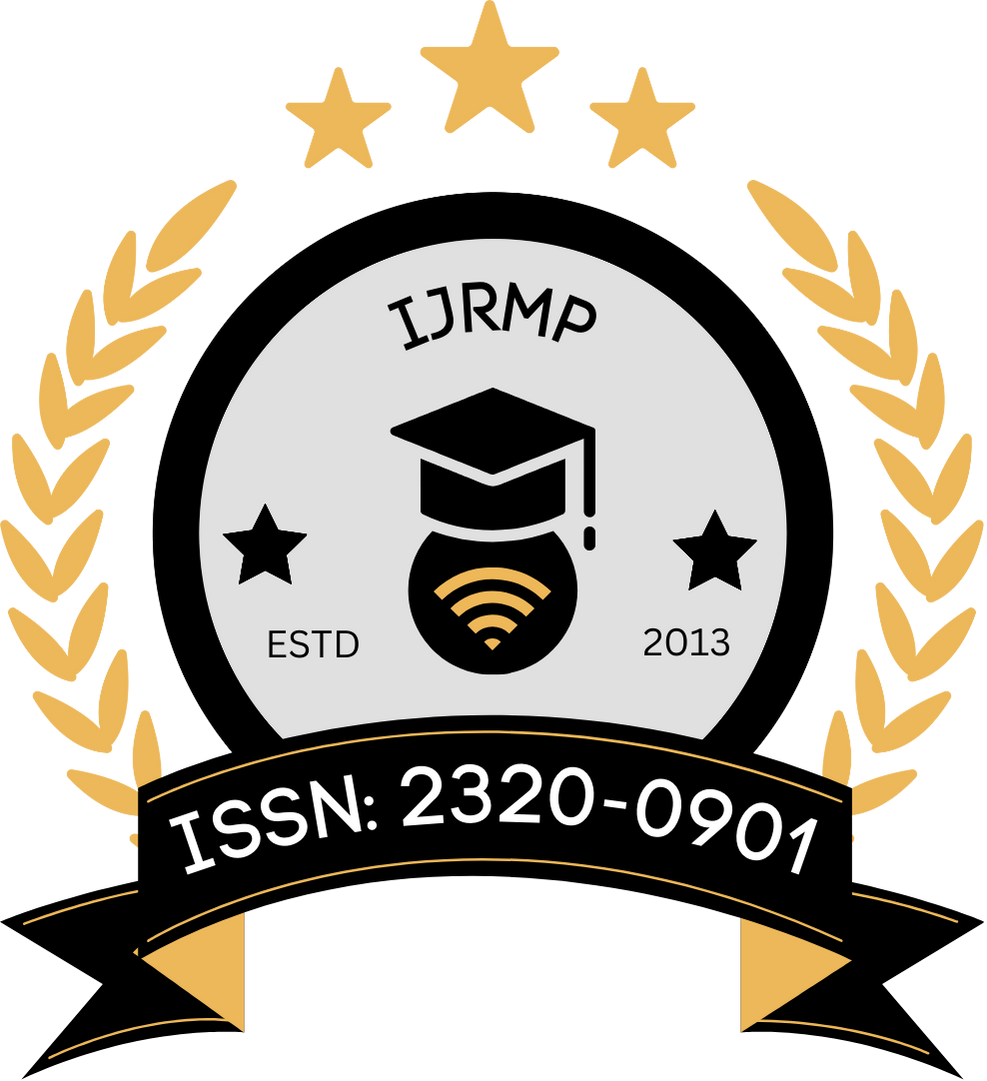![]()
Jhanvi Ramesh
Independent Researcher
Karnataka, India
Abstract
Biohybrid implants represent a novel convergence of biological and synthetic components to create dynamic, responsive drug delivery systems. These devices are engineered to achieve controlled, localized, and stimuli-responsive drug release by integrating living cells or biomolecules with biocompatible polymers and microelectromechanical systems (MEMS). The emergence of smart biohybrid implants addresses longstanding challenges in conventional drug delivery, such as non-specific distribution, burst release, and poor patient compliance. This study investigates the design, materials, mechanisms, and early clinical progress of biohybrid implants, with a focus on their responsiveness to physiological signals such as pH, temperature, and enzymatic activity. A comprehensive review of prior research, device architecture, and in vitro evaluations has been undertaken to determine the efficiency and reliability of these systems in achieving sustained drug release. The findings highlight the promise of biohybrid platforms in chronic disease management, particularly for conditions requiring localized and long-term pharmacological intervention.
Keywords
Biohybrid implants, smart drug delivery, microelectromechanical systems, stimuli-responsive release, biomaterials, controlled release systems
References
- Elman, N. M., Ho Duc, H. L., & Cima, M. J. (2009). An implantable MEMS drug-delivery device for rapid delivery in ambulatory emergency care. Biomedical Microdevices, 11(3), 625-631. https://doi.org/10.1007/s10544-008-9272-6 ouci.dntb.gov.ua
- Farra, R., Sheppard, N. F., McCabe, L., et al. (2012). First-in-human testing of a wirelessly controlled drug-delivery microchip. Science Translational Medicine, 4(122), 122ra21. https://doi.org/10.1126/scitranslmed.3003276 pubmed.ncbi.nlm.nih.gov
- Heller, A. (2005). Integrated medical feedback systems for drug delivery. AIChE Journal, 51(4), 1054-1066. https://doi.org/10.1002/aic.10489 aiche.onlinelibrary.wiley.com
- Hoare, T. R., & Kohane, D. S. (2009). A magnetically triggered composite membrane for on-demand drug delivery. Nano Letters, 9(10), 3651-3657. https://doi.org/10.1021/nl9018935 pubs.acs.org
- Huang, X., & Brazel, C. S. (2001). On the importance and mechanisms of burst release in matrix-controlled drug-delivery systems. Journal of Controlled Release, 73(2-3), 121-136. https://doi.org/10.1016/S0168-3659(01)00248-6 pubmed.ncbi.nlm.nih.gov
- Kopeček, J. (2003). Smart and genetically engineered biomaterials and drug-delivery systems. European Journal of Pharmaceutical Sciences, 20(1), 1-16. https://doi.org/10.1016/S0928-0987(03)00164-7 pubmed.ncbi.nlm.nih.gov
- Kost, J., & Langer, R. (2001). Responsive polymeric delivery systems. Advanced Drug Delivery Reviews, 46(1-3), 125-148. https://doi.org/10.1016/S0169-409X(00)00101-3 pubmed.ncbi.nlm.nih.gov
- Langer, R., & Peppas, N. A. (2003). Advances in biomaterials, drug delivery, and bionanotechnology. AIChE Journal, 49(12), 2990-3006. https://doi.org/10.1002/aic.690491202 aiche.onlinelibrary.wiley.com
- Mahoney, M. J., & Anseth, K. S. (2006). Three-dimensional growth and function of neural tissue in degradable polyethylene glycol hydrogels. Biomaterials, 27(10), 2265-2274. https://doi.org/10.1016/j.biomaterials.2005.11.007 pubmed.ncbi.nlm.nih.gov
- Maloney, J. M., Uhland, S. A., Polito, B. F., et al. (2005). Electrothermally activated microchips for implantable drug delivery and biosensing. Journal of Controlled Release, 109(1-3), 244-255. https://doi.org/10.1016/j.jconrel.2005.09.035 pubmed.ncbi.nlm.nih.gov
- Oyen, M. L. (2014). Mechanical characterisation of hydrogel materials. International Materials Reviews, 59(1), 44-59. https://doi.org/10.1179/1743280413Y.0000000022 ui.adsabs.harvard.edu
- Prescott, J. H., Lipka, S., Baldwin, S., et al. (2006). Chronic, programmed polypeptide delivery from an implanted, multireservoir microchip device. Nature Biotechnology, 24(4), 437-438. https://doi.org/10.1038/nbt1199 pubmed.ncbi.nlm.nih.gov
- Richards Grayson, A. C., Choi, I.-S., Tyler, B. M., et al. (2003). Multi-pulse drug delivery from a resorbable polymeric microchip device. Nature Materials, 2(11), 767-772. https://doi.org/10.1038/nmat998 pmc.ncbi.nlm.nih.gov
- Santini, J. T., Jr., Cima, M. J., & Langer, R. (1999). A controlled-release microchip. Nature, 397(6717), 335-338. https://doi.org/10.1038/16898 nature.com
- Sirsi, S. R., & Borden, M. A. (2014). State-of-the-art materials for ultrasound-triggered drug delivery. Advanced Drug Delivery Reviews, 72, 3-14. https://doi.org/10.1016/j.addr.2013.12.010 pubmed.ncbi.nlm.nih.gov
- Staples, M., Daniel, K., Cima, M. J., & Langer, R. (2006). Application of micro- and nano-electromechanical devices to drug delivery. Pharmaceutical Research, 23(5), 847-863. https://doi.org/10.1007/s11095-006-9906-4 pubmed.ncbi.nlm.nih.gov
